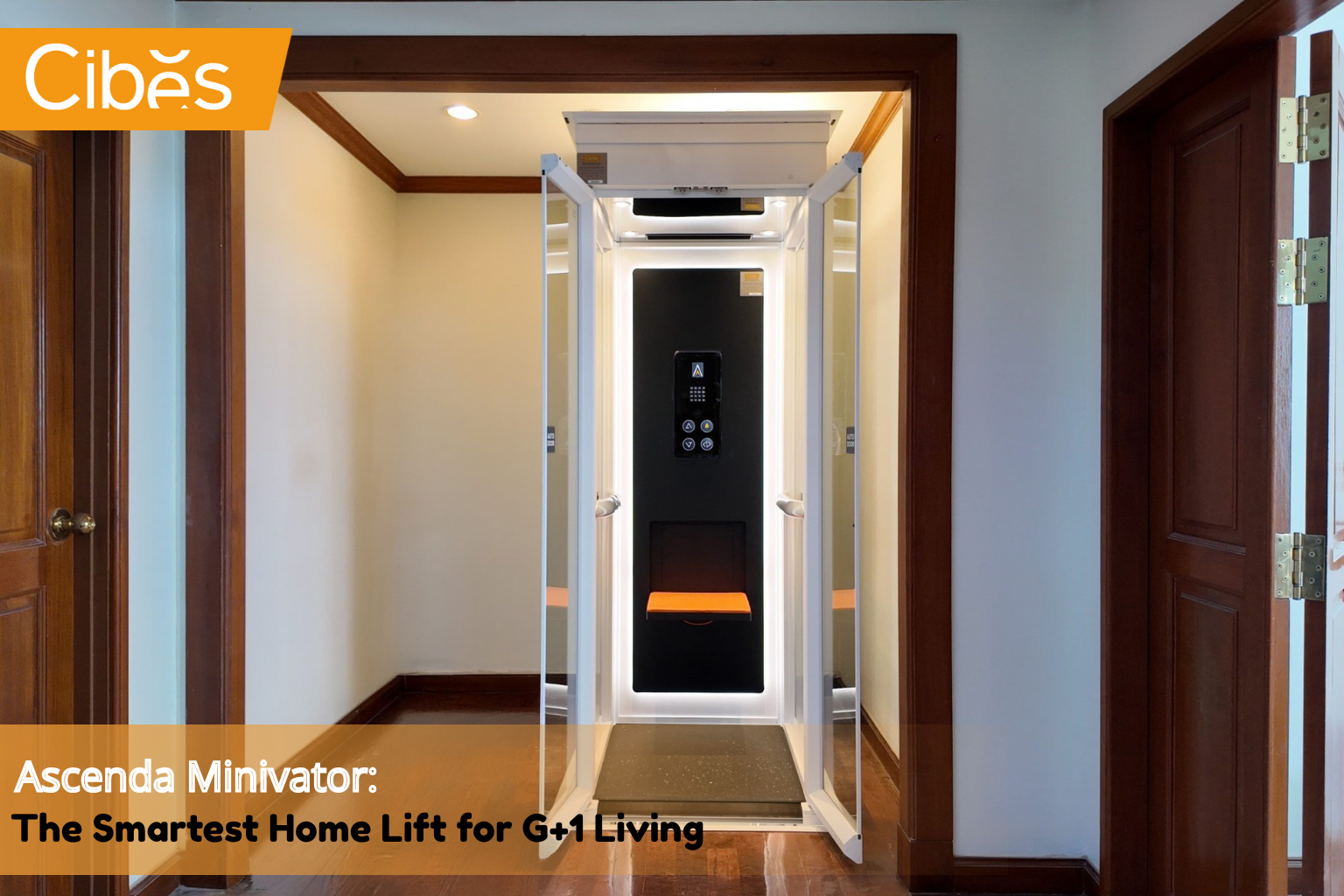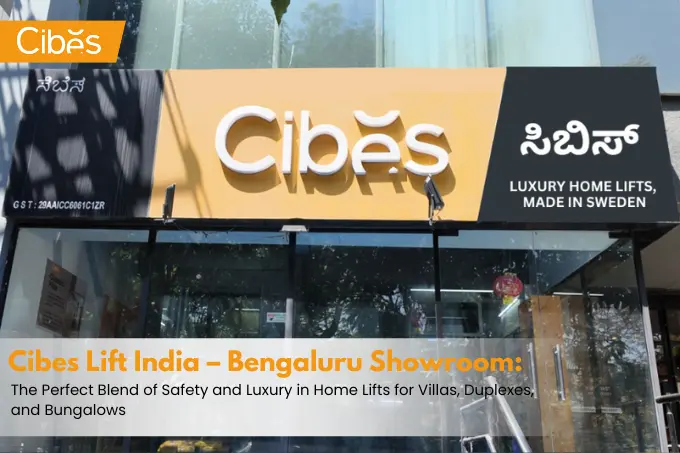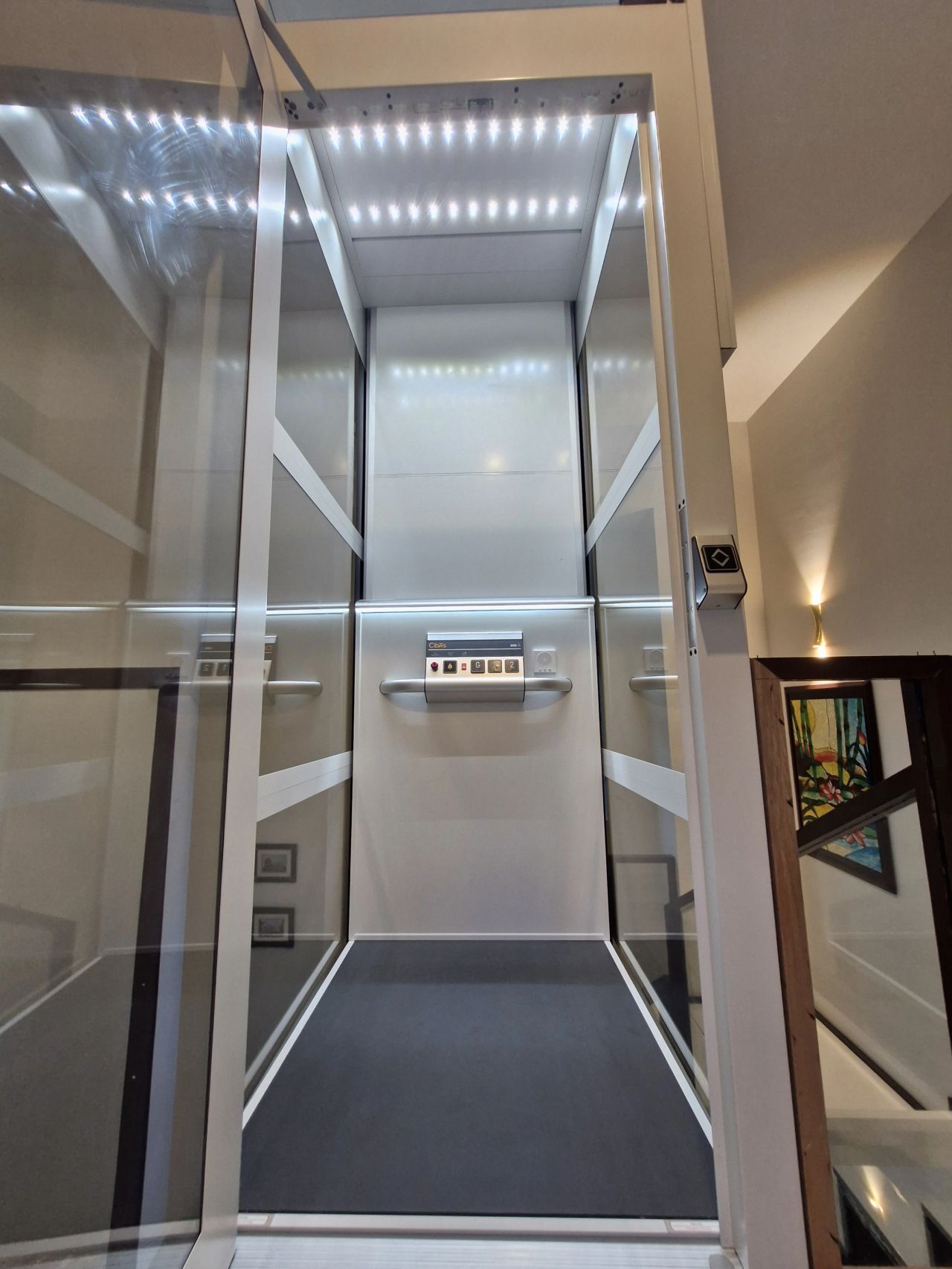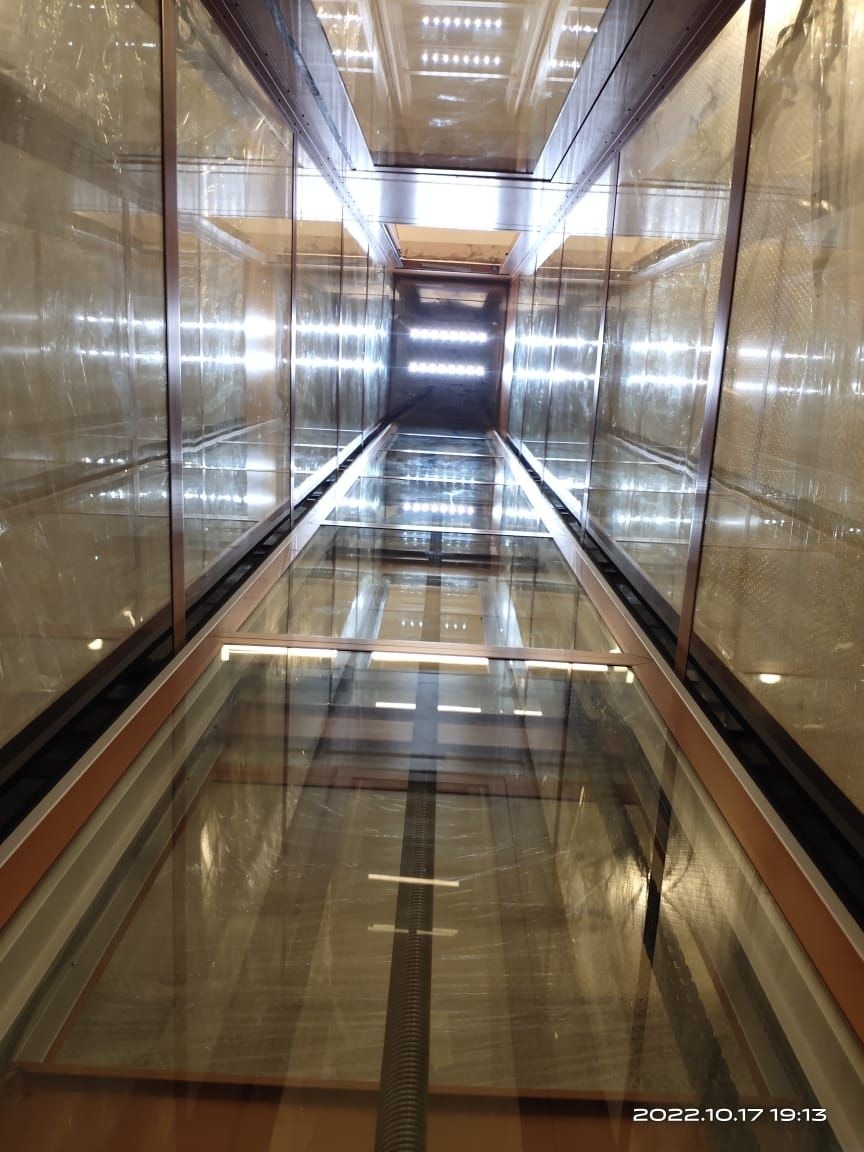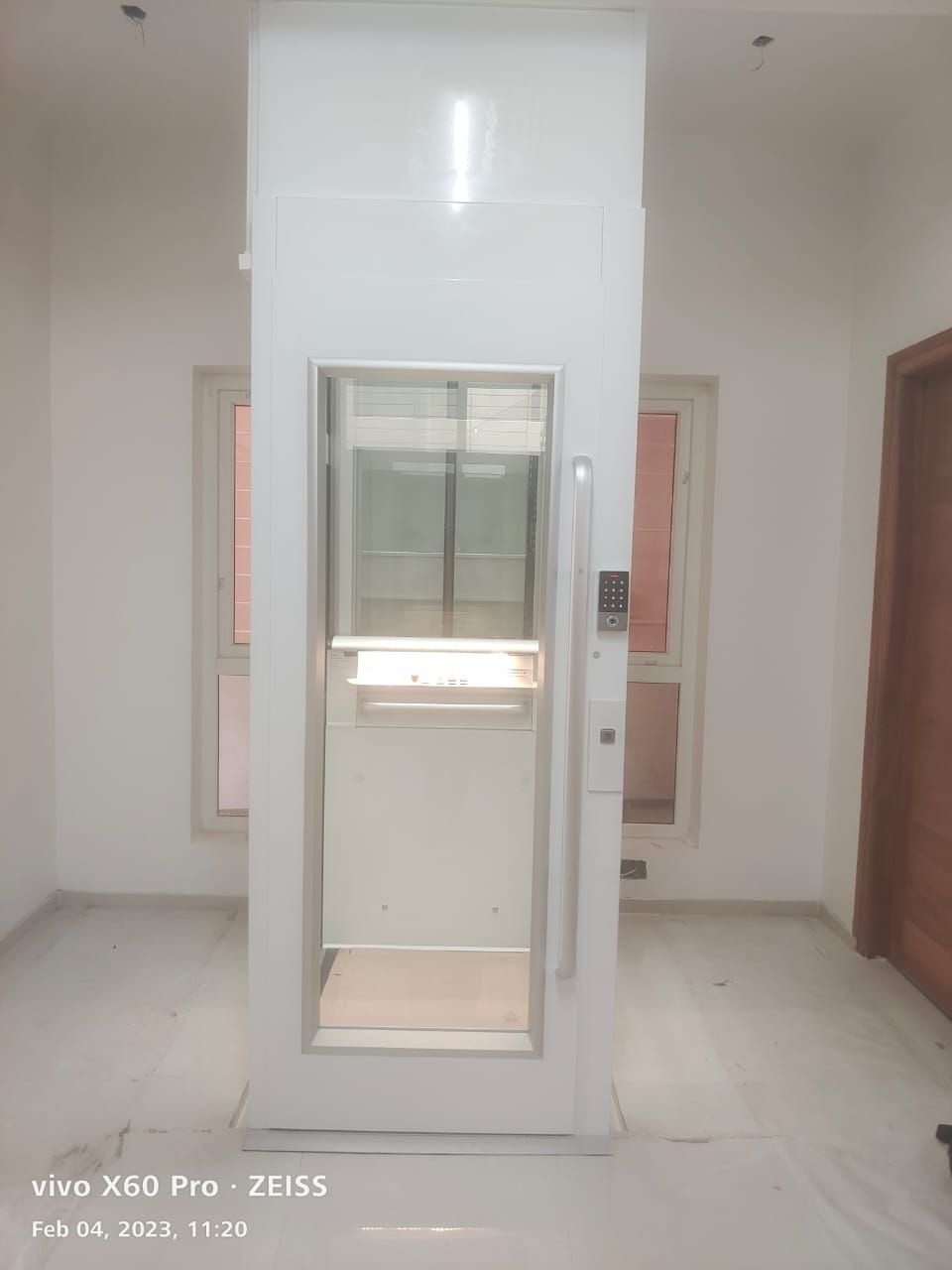Blog - 15/01/2025
HISTORY OF ELEVATOR

Elevators are a common feature as well as a necessity in buildings and homes around the world in today’s time, but most people don’t give much importance to their work or how they came into existence. Elevators are fascinating pieces of technology with a lengthy history.
Primitively elevators powered by water wheels, animals, or people go way back to 300 BC. These types of elevators have been used for almost 2,000 years. It is strongly believed that Archimedes invented the first elevator back in 236 B.C., and his model functioned with hoisting ropes around a drum. These ropes were connected to a capstan, which was operated by human labor. This elevator became standardized significantly throughout the region, and it would have been found in many different locations in Ancient Greece. Ancient Rome also made use of the ingenuity that came from elevator use, and the equipment was common for moving animals and goods. They were an important part of the Colosseum. In the ancient grand amphitheater, lions, wolves, leopards, and bears would rise out of seemingly hidden holes in the ground to take part in gladiator battles. Today, we know that this was conducted by a lift system that led into the trap doors.
In the Colosseum, there were somewhere between 28 and 30 lifts, and the animals traveled up 23-foot tall wooden shafts before making their appearance. Each lift was designed to transport 600 pounds at once – roughly the weight of two lions – through the use of manpower, much like the Greek elevators. However, to carry such weight, the capstans required eight men to push and pull. This meant if all lifts operated at once, there would be 200 workers operating the machines at a given point in time.
The first human-powered, counter-weighted, personal elevator was built in 1743 for King Louis XV of France. It connected his apartment in Versailles to that of his mistress, Madame de Chateauroux, who lived one floor above him.
Elevator technology began to advance significantly in the 19th century. Many elevators were powered by steam and became important in the Industrial Revolution to allow people to transport heavy materials in warehouses, mines, and factories.
In 1823, two architects, Burton and Horner, built an “ascending room” to give tourists a panoramic view of London. In 1835, Frost and Stutt, who were also architects, built the “Teagle,” a steam, belt-driven and counter-weighted elevator in England.
In 1846, Sir William Armstrong invented the hydraulic crane. The system was supported by a heavy piston that moved in a cylinder and was powered by oil or water pressure inside the pump. These lifts began to replace steam-powered elevators by the 1870s.
At the 1854 New York World’s Fair, Elisha Otis, and his sons revealed an innovation to the elevator cable system that made it far more practical. This was a safety device, and it included a wooden frame at the top of the platform that would snap out against the sides of the elevator shaft if the ropes broke, essentially functioning as a brake. This increased the public’s confidence in elevators. Otis’ elevator company, the Otis Brothers, installed the first public elevator in a five-story New York department store in 1874. In 1887, an electric elevator, using the style pioneered by Werner von Siemens, was developed in Baltimore, using a revolving drum to wind the hoisting rope. Unfortunately, these drums were not large enough to store the long hoisting ropes required by skyscrapers and other large structures. However, the rapid advancement of motor technology brought on the gearless traction electric elevator by the early 1900s, allowing for taller buildings. Multi-speed motors soon replaced the original single-speed models, and push-button controls modernized the elevator even further. Electric elevators became more common in the late 19th century.
Hydraulic Elevators, just like many other advances in technology, became far more common in the mid-1800s during the Industrial Revolution. Many of these elevators were based on the hydraulic system, in which a piston inside a cylinder used pressure from water or oil to raise or lower the elevator car. The main drawback with these lifts was that the buildings containing them needed to have pits below the elevator shaft so that the pistons could draw completely back. The higher the building was, the deeper the pit had to be, making this lift type highly impractical. An alternative model to this used a cable system, in which ropes raised and lowered the car by means of a pulley and gear system. A counterweight helped to conserve energy. This design is much closer to what we use today.
All the businesses that have been packed into the Earth’s metropolises today owe a major part of their lifestyles to this miraculous invention. In a lot of ways, the elevator was one of the key players in shaping our society. In the present and future, with urbanization on the rise, the elevator’s importance only continues. Today, more than half of the human population lives in cities. By 2050, it is estimated that the urban population will be about 5.1 billion, or two-thirds of the world population by that time. Of course, we will also likely see the incorporation of technological advancements in elevator systems to continue their safe and efficient use.
Frequently Asked Questions (FAQs)
1. When was the first elevator invented?
The idea of lifts traces all the way back to Ancient Greece, where the mathematician Archimedes is believed to have built the first primitive lift around 236 BC, using ropes and pulleys.
2. Who invented the modern elevator?
Elisha Otis revolutionized the modern elevator in 1852 by introducing the safety brake, which prevented elevators from falling if the hoisting rope failed. His invention made elevators safe for passengers and paved the way for vertical transportation in buildings.
3. How did elevators evolve over time?
- Ancient Times: Simple hoists using human, animal, or water power.
- 18th Century: Steam elevators used in factories and mines.
- 19th Century: The safety elevator by Otis revolutionized urban development.
- 20th Century: Electric and hydraulic elevators allowed for building skyscrapers.
- 21st Century: Smart and energy-efficient elevators with AI, automation, and touchless technology.
4. When did electric elevators replace steam-powered ones?
Electric lifts were presented during the 1880s and immediately supplanted steam-controlled lifts by the mid-1900s because of their proficiency, speed, and capacity to serve taller structures.
5. What are some of the most famous elevators in history?
- The Eiffel Tower Elevator (1889) – One of the earliest hydraulic systems.
- The Empire State Building Elevators (1931) – Pioneered high-speed vertical transportation.
- The Burj Khalifa Elevators (2010) – Among the fastest in the world, reaching speeds of 22 mph (35 km/h)

For more information, please contact Cibes Lift brand home lifts at Cibes Lift (india) Pvt. Ltd.
Lift showroom in Gurugram
Ground, Emaar Mgf The Palm Drive Vatika Professional Point, Badshahpur, Sector 66, Gurugram, Haryana 122002
Lift showroom in Bangalore
Ward No. 67, 8th Block, Regent Sunnyside, Ground Floor, Corporation No. 581, Koramangala, Karnataka 560095
Lift (only-office) in Kolkata
1st Floor, Anuj Chambers, 24, Park St, Park Street area, Kolkata, West Bengal 700016
For more information about our screw home lifts, please get in touch with us or dial +91 8800 887 887 to receive a callback and a quote.
Experience effortless movement in your two-storey home with the Ascenda Lift for G+1. Designed for safety, comfort, and modern living, Ascenda brings pitless installation, all-glass elegance, and advanced features that transform everyday mobility. A perfect upgrade for families seeking convenience and long-term reliability.
The real lift cost in 2025 goes beyond the price tag. Cheap lifts may save money upfront but compromise safety, quality, and durability. Premium lifts like Cibes offer superior engineering, energy efficiency, and long-term value, making them the smarter investment for homeowners seeking safety, style, and reliability.
Experience true harmony with Cibes pitless lifts, a Vastu-friendly solution that preserves your home’s balance, avoids deep digging, and brings effortless comfort with modern elegance.
Step into Cibes Lift India – Bengaluru Showroom, where luxury meets safety. Explore premium home lifts crafted for villas, duplexes, and bungalows with unmatched comfort.
Discover Cibes Lift India – Gurugram Showroom, showcasing the safest and most luxurious home lifts. Perfectly designed for villas, duplexes, and bungalows to blend elegance with comfort.

We offer lifts for any application, and regardless if you need a lift for your home, a school, an office, a hotel or a warehouse, we have the perfect lift model for you,a hotel or a warehouse, we have the perfect lift model for youa hotel or a warehouse, we have the perfect lift model for you
See all




